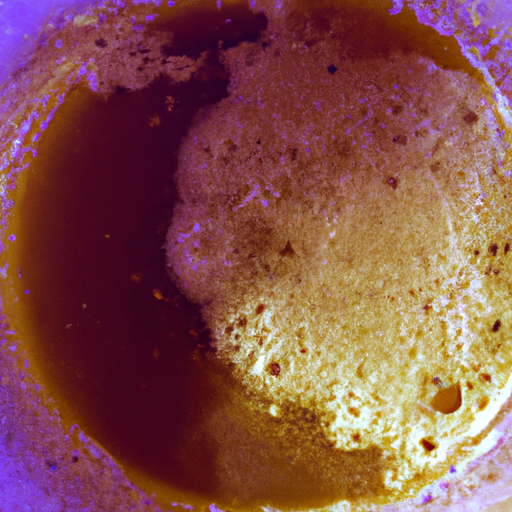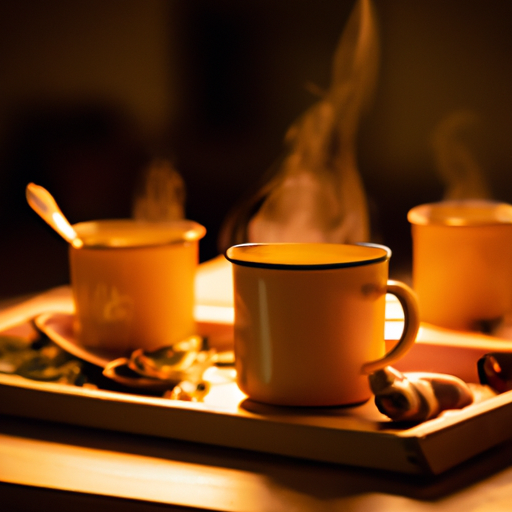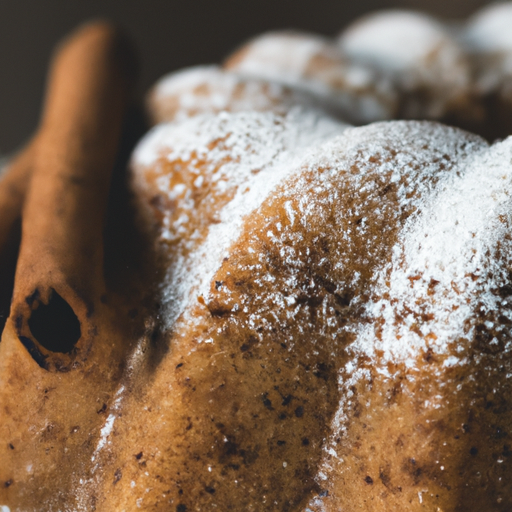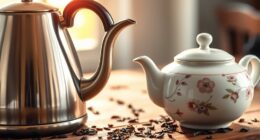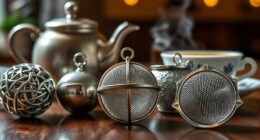Have you ever wondered what it would be like to dive into the deep, rich depths of a mysterious elixir? Well, prepare to embark on an adventure into the fascinating world of fermented tea.
This ancient beverage, steeped in tradition and brimming with health benefits, holds the key to unlocking a world of flavors and wellness. As they say, ‘the proof is in the pudding,’ or in this case, the tea leaves. With a single sip, you’ll be transported to far-off lands like Yunnan in China or Hunan province, where fermented teas like Puerh and dark tea have been crafted for centuries.
Not to be outdone, Japan offers its own unique fermented teas like Awabancha, Batabatacha, and Goishicha. But let’s not forget about kombucha, the beloved functional drink that has taken the health and wellness scene by storm.
So, whether you’re a tea enthusiast or a health-conscious individual, join me as we delve into the world of fermented tea and uncover the secrets that lie within each enchanting brew.
Key Takeaways
- Fermented tea undergoes a natural or accelerated fermentation process that can last from several weeks to decades.
- Fermented tea is made with real tea leaves and has been around for hundreds, if not thousands, of years.
- Fermented teas, such as Puerh tea and dark tea, have various health benefits, including weight loss and boosting metabolism.
- Fermented tea and kombucha both offer potential health benefits, such as aiding digestion, providing probiotics, and supporting gut health and the immune system.
What is Fermented Tea?
I’ve learned that fermented tea is made through a natural or accelerated fermentation process and has been enjoyed for centuries. The fermentation process is what gives this tea its unique flavors and health benefits.
During fermentation, the tea leaves undergo a transformation, which can last from several weeks to decades. This process is influenced by factors such as the type of tea, how it was made, aged, stored, and brewed.
Fermented tea has a rich history and origins, with varieties like Puerh tea from Yunnan, China, and dark tea from Hunan province. These teas have been cherished for their earthy flavors and potential health benefits, including weight loss and boosting metabolism.
It’s fascinating to explore the world of fermented tea and discover the different types and their origins.
Types and Varieties
Exploring the diverse array of fermented tea is like embarking on a flavorful journey through a flourishing garden of tea varieties. Fermented tea production methods vary, resulting in different flavors and taste profiles.
-
Puerh tea, a popular type of fermented tea from Yunnan, China, can be naturally fermented or accelerated. It offers earthy and robust flavors, with raw Puerh having a more astringent taste and ripe Puerh being mellow and smooth.
-
Dark tea, made outside of Yunnan, China, has its own distinct flavor. Dark tea from Hunan province, known as ‘golden flower’ tea, has a unique taste profile due to the visible yellow fungus it contains.
-
Japan also offers its own fermented teas, including Awabancha, Batabatacha, and Goishicha, each with their own distinct flavors and aromas.
Indulging in the wide variety of fermented teas allows tea enthusiasts to experience a range of unique tastes and aromas, making every sip a delightful adventure.
Health Benefits
There are numerous health benefits associated with consuming fermented teas. Scientific studies have shown that fermented tea can have positive effects on our overall health. One of the key benefits is its ability to act as a natural remedy for digestive issues. Fermented tea contains probiotics, which are beneficial bacteria that promote a healthy gut microbiome. These probiotics help to improve digestion and can alleviate symptoms such as bloating, gas, and constipation. Additionally, fermented tea has been found to have antioxidant properties, which can help protect against cell damage and reduce the risk of chronic diseases. It is important to note that the health benefits of fermented tea may vary depending on the type, how it was made, aged, stored, and brewed. As always, it is recommended to consult with a healthcare professional before making any changes to your diet or using fermented tea as a remedy for digestive issues.
| Health Benefits of Consuming Fermented Tea |
|---|
| Natural remedy for digestive issues |
| Contains probiotics for a healthy gut |
| Antioxidant properties for cell protection |
| Can reduce the risk of chronic diseases |
Frequently Asked Questions
How long does the fermentation process of tea typically last?
The fermentation process of tea typically lasts from several weeks to decades. It is important in tea production as it enhances flavor and aroma. Fermented tea has many health benefits including weight loss and boosting metabolism.
Can fermented tea be made from different types of tea leaves?
Yes, fermented tea can be made from different types of tea leaves. The fermentation techniques used can vary, resulting in a wide range of flavors and health benefits associated with fermented tea.
Are there any specific regions known for producing fermented tea?
Different regions have their own techniques for producing fermented tea. China is known for Puerh tea, while Hunan province has dark tea with yellow fungus. Japan produces Awabancha, Batabatacha, and Goishicha. Fermented tea offers various health benefits, including weight loss and improved digestion.
Can fermented tea be consumed both hot and cold?
Yes, fermented tea can be consumed both hot and cold. It offers various health benefits, including aiding weight loss, digestion, and antioxidant activity. There are different methods of tea fermentation, such as natural or accelerated fermentation.
How does the flavor of fermented tea differ from other types of tea?
The flavor of fermented tea is distinct and unique compared to other types of tea. It can have earthy, rich, and sometimes even slightly sweet or fruity notes. Consuming fermented tea offers a range of benefits, including improved digestion and antioxidant activity.
Conclusion
In conclusion, the world of fermented tea is a captivating realm full of ancient traditions and healthful wonders. From the rich and earthy flavors of Puerh tea to the tangy and refreshing taste of kombucha, there is a fermented tea for every palate.
These beverages, with their probiotics and potential benefits for gut health and the immune system, offer a tantalizing journey into wellness.
So, why not embark on this fascinating adventure and discover the magic of fermented tea for yourself?

